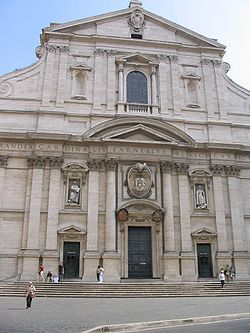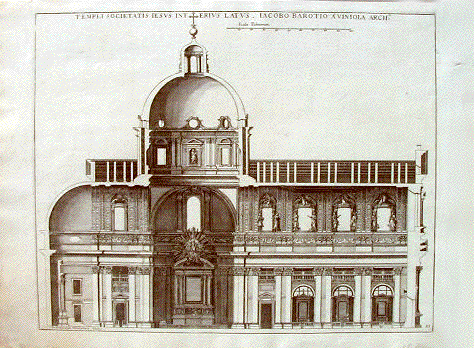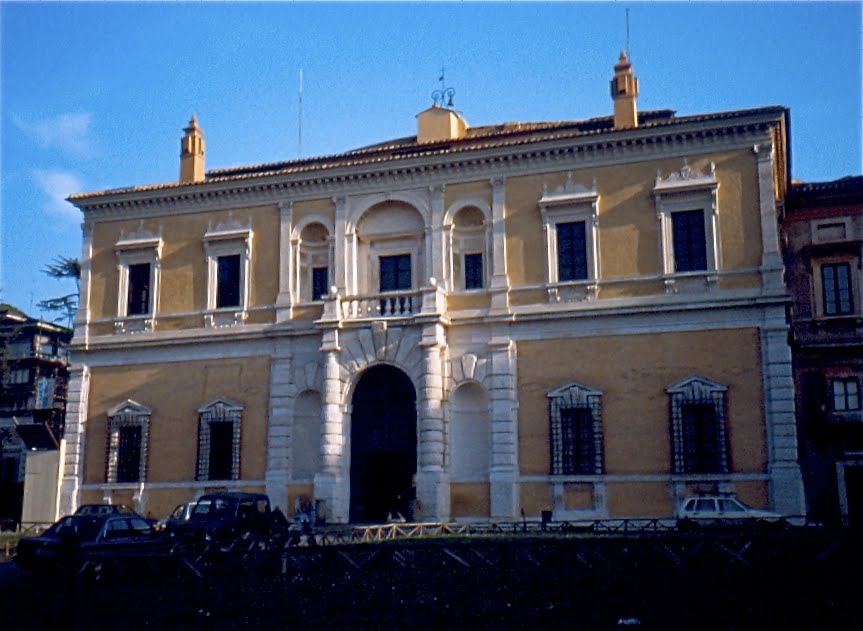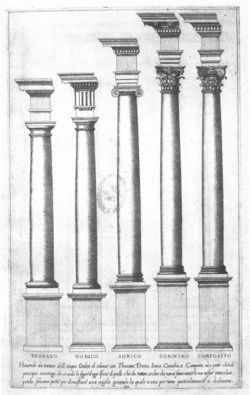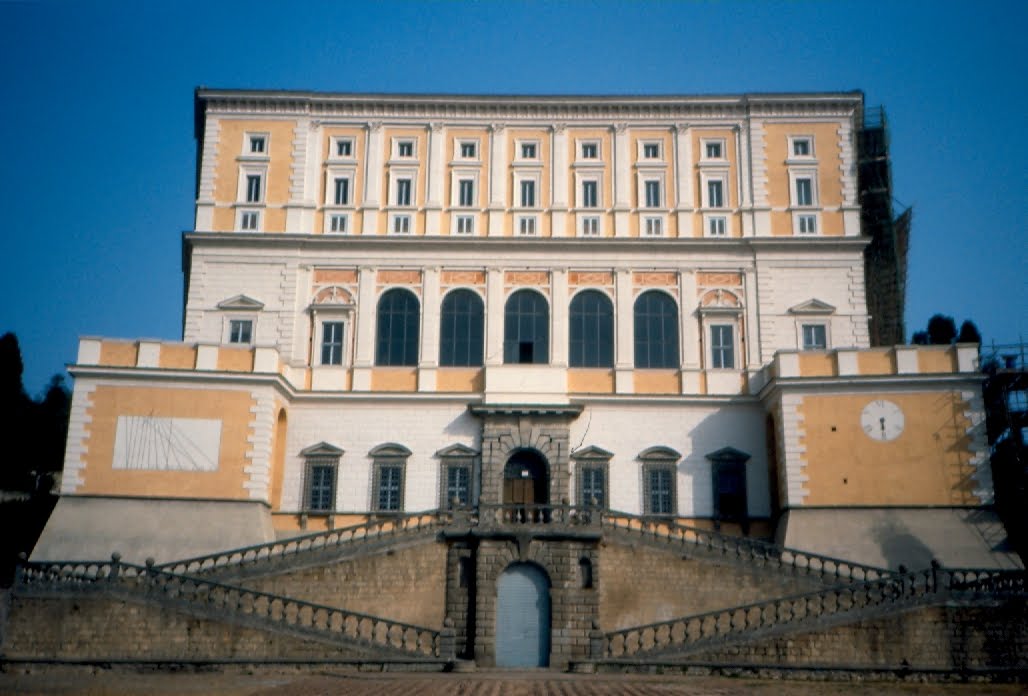<Back to Index>
- Physicist Otto Robert Frisch, 1904
- Architect Giacomo (Jacopo) Barozzi (Barocchio) da Vignola, 1507
- 39th President of the United States James Earl (Jimmy) Carter, Jr., 1924
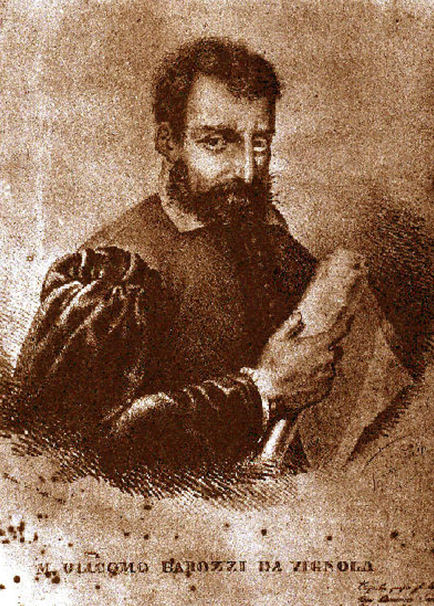
Giacomo (or Jacopo) Barozzi (or Barocchio) da Vignola, often simply called Vignola (1 October 1507 - 7 July 1573) was one of the great Italian architects of 16th century Mannerism. His two great masterpieces are the Villa Farnese at Caprarola and the Jesuits' Church of the Gesù in Rome. The three architects who spread the Italian Renaissance style throughout Western Europe are Vignola, Serlio and Palladio.
Giacomo Barozzi was born at Vignola, near Modena (Emilia-Romagna). He began his career as architect in Bologna, supporting himself by painting and making perspective templates for inlay craftsmen. He made a first trip to Rome in 1536 to make measured drawings of Roman temples, with a thought to publish an illustrated Vitruvius. Then François I called him to Fontainebleau, where he spent the years 1541 - 1543. Here he probably met his fellow Bolognese, the architect Sebastiano Serlio and the painter Primaticcio.
After his return to Italy, he designed the Palazzo Bocchi in Bologna. Later he moved to Rome. Here he worked for Pope Julius III and, after the latter's death, he was taken up by the papal family of the Farnese and worked with Michelangelo, who deeply influenced his style. From 1564 Vignola carried on Michangelo's work at St Peter's Basilica, and constructed the two subordinate domes according to Michelangelo's plans.
Giacomo Barozzi died in Rome in 1573. In 1973 his remains were reburied in the Pantheon, Rome.
It
is unknown who he was married to and who his children were, but his
living descendents currently live in America under the shortened last
name of Rozzi. Like many other architects, Vignola submitted his plans for completing the facade of San Petronio, Bologna. Designs by Vignola, in company with Baldassare Peruzzi, Giulio Romano, Andrea Palladio and others furnished material for an exhibition in 2001. His two published books helped formulate the canon of classical architectural style. The earliest, Regole delli cinque ordini d' architettura ["Canon
of the five orders of architecture"] (first published in 1562, probably
in Rome), presented Vignola's practical system for constructing columns
in the five classical orders (Tuscan, Doric, Ionic, Corinthian and
Composite) utilizing proportions which Vignola derived from his own
measurements of classical Roman monuments. The
clarity and ease of use of Vignola's treatise caused it to become in
succeeding centuries the most published book in architectural history. Vignola's second treatise, the posthumously published Due regole della prospettiva pratica ["Two
rules of practical perspective"] (Bologna 1583), favours one-point
perspective rather than two point methods such as the bifocal
construction. Vignola presented — without theoretical obscurities —
practical applications which could be understood by a prospective
patron.
